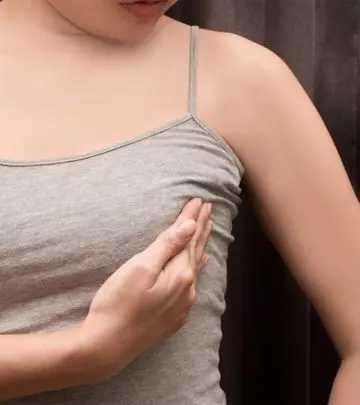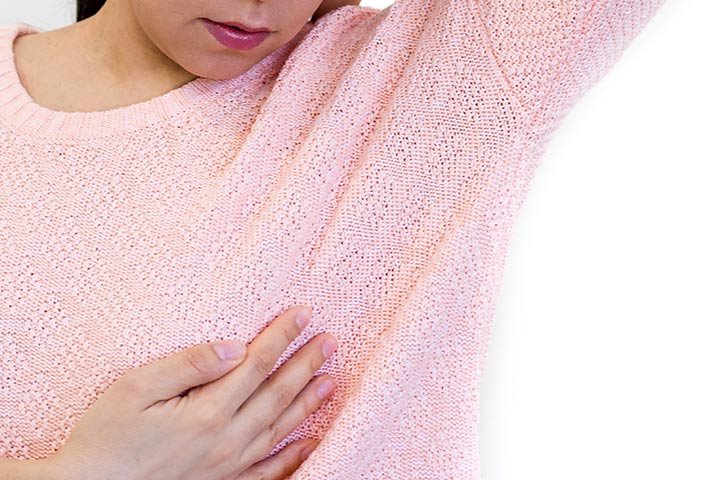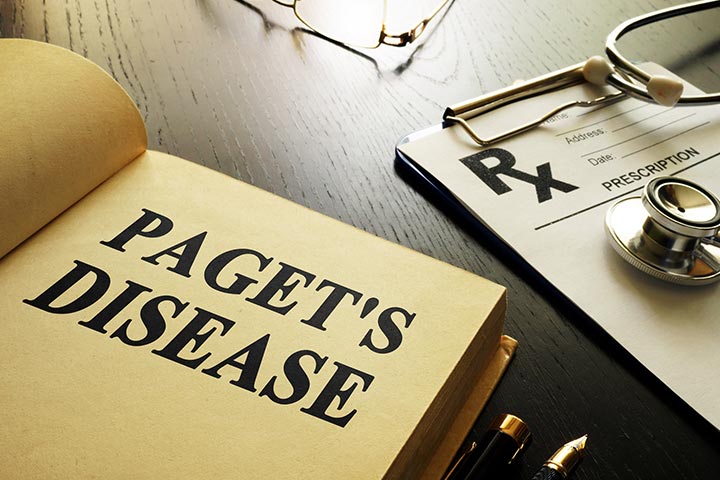
Image: Shutterstock
Pain in the nipples is not a cause of worry in some cases. It could be because of wearing a tight bra or an allergic reaction to laundry detergent. But it could also be a symptom of an underlying problem. Breastfeeding may also be a cause of nipple pain as the nipples of breastfeeding mothers tend to be sore because of chafing. Menstruation and the early stages of pregnancy can also make the nipples sore and tender at times (1). Here, we discuss all the possible reasons that cause nipple pain:
Sexual Activity
Engaging in some form of sexual activity which involves the nipples can make them sore. Nipple pain which arises due to sexual activity is usually not a cause for concern. The pain usually subsides after some time by giving the nipples enough time to heal. Moisturizing will help in healing the area faster and also prevent it from getting worse. Using nipple guards is also another helpful remedy (2).
Changes In Hormones
You may have noticed your nipples becoming sore or tender when you are closer to your period date or during menstruation. It is because the hormone levels change when a woman is on her period and this can trigger soreness in the breasts and nipples (3). There is a spike in the levels of two hormones- estrogen and progesterone – when your period is about to start. These hormonal fluctuations can also make the breasts appear more swollen. This pain is usually temporary and doesn’t last for more than a week. However, it’s better to speak to a doctor if you experience lasting pain.
Friction
One of the most common reasons for your nipples to be sore could be friction (4). Wearing a tight-fitting bra could cause nipple pain because of the friction created by it. Working out for a long time can also cause nipple pain. If you are sensitive to friction, you can protect your nipples by wearing a surgical tape on your nipples during an intense session of workout. Playing sports activities like running, basketball or even surfing can cause friction in nipples. Wearing the right undergarments and clothes while engaging in such activities can help in creating less friction.
Infection
Breastfeeding can cause your nipples to crack or bleed increasing the chances of getting an infection. Similarly, dealing with an allergic reaction or an injury caused by friction can also lead to infections. Yeast infection can occur in the nipples if you have recently taken antibiotics, have any damage to the tissue surrounding the nipples, or have a personal history of fungal infections. It is caused by a fungus called Candida albicans (5).
Breastfeeding women are prone to nipple infections. Thrush, which is a yeast infection, can affect both the mother as well as the baby. Mothers who have thrush may experience sharp pain soon after feeding their baby (6).
Mastitis is another possible cause of nipple pain which may occur in pregnant women (7). Trapped milk in the milk ducts pave way for the bacteria to grow and spread in the duct. The symptoms may include red, sore breasts that are swollen.
Paget’s Disease
It is a rare type of breast cancer which affects the nipple and its surrounding skin (8). It is often seen in women over 50 years of age. Signs and symptoms usually appear in just one breast. Watch out for signs and symptoms like flaky or hardened skin around the nipple, redness, itching, burning sensation, inverted or flattened nipple, pale yellow or bloody discharge from the nipples, or a lump in one of the breasts.
We often regard nipple pain as something harmless. And there are many reasons causing nipple pain that does not require much medical care and attention. Sometimes all you need is the right clothes and some moisturizing to soothe the area. But being aware of the possible causes and the other signs and symptoms will help you get a better diagnosis faster. Better to be safe than sorry.


















